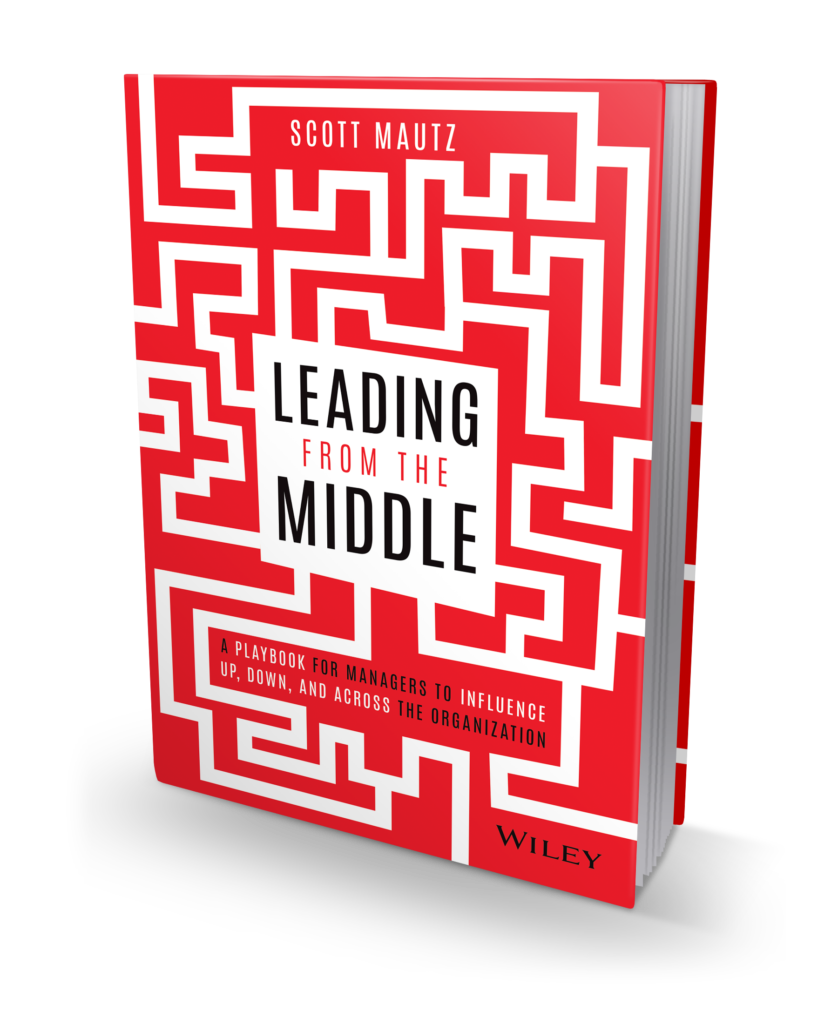
In my new book, Leading from the Middle: A Playbook for Managers to Influence Up, Down, and Across the Organization, I discuss the fact that we’ve taken on multiple roles and wear more hats than ever at work. It’s caused by the charge to do more with less, the increasing complexity of global work, and many other factors.
My research identified the most common roles many of us now play. What follows is a brief description of 5 of the most common roles, and then what I call “Role Plays” – the best play, or tip, to succeed within each of these roles.
1. Catalyst
Undoubtedly in your job, a key role is to make things happen. “If it’s to be, it’s up to thee” kind of stuff. It’s all too easy, though, to get caught up in a flurry of activity that’s not necessarily the right activity.
The Role Play: Try the powerful question that follows; I ask myself this as a filter before initiating anything: “Am I about to make the right thing happen at the right time for the right reason?”
2. Decision Maker
All. Day. Long. Key is to ensure you’re deciding on the maximum number of things that make the biggest impact.
The Role Play: Negotiate your level of authority to avoid ending up a victim of what researchers call the “Karasek Model,” which says stress is maximized in conditions of high responsibility with little authority to make decisions.
Be bold. Get clear on where your decision-making power starts and ends and push the boundaries. Craft an agreement for autonomy with your boss where you spell out the scope of what you get to make the call on and how your boss will be kept up to speed and can input on what you decide.
3. Synthesizer
If you’re not the CEO, or a new hire, then you’re likely at the intersection of the horizontal and vertical information flow in your organization; so it’s easy to get overwhelmed. It’s critical to avoid analysis paralysis while carefully processing the most important information, then taking action accordingly.
The Role Play: The key to being a good synthesizer of information is to listen carefully and be critical of everything you read and hear.
The opposite is all too common. For example, it’s not unusual to see well-meaning managers take new information and run straight out the window with it because they were in a hurry to decide, because they were overwhelmed with information and just making the call was the easiest way out, or because they weren’t skeptical and analytical enough about what was presented.
Missteps to avoid here also include missing the things not being said or written, failing to keep the motivations in mind of the presenter and getting overly swayed by emotion, and failing to spot discrepancies in data or questionable data sources.
4. Strategist
Odds are, you aren’t just a tactician, you also have the opportunity to play an active strategic role or at least to proactively give strategic input. Yet so often I hear, “Strategic thinking is the last thing I have time for.”
The Role Play: Toggle between the three strategy jobs to do (many stop at the first job).
First, cascade top-down strategies to fully implement top management’s intentions. Start by fully understanding the strategies, then share perspective to gain commitment when converting the strategies into operational tactics.
Second, shape top-down strategies in advance by analyzing information available to you, assessing opportunities and threats, and sharing your perspective and recommendations with decision makers above you.
Finally, champion “on the ground” strategies, ones that you and your team create and implement given what you know by being closest to customers, consumers, and competitors. This last strategy job to do is the most often missed or underserved, which is a travesty, as one study showed that a whopping 80 percent of strategic projects initiated by top management failed, while 80 percent of those initiated by mid-level managers succeeded.
5. Bridge Builder
I’m betting you’ve had to build bridges up, down, and across your organization. Bridges are built and maintained on trust, the subject of many books, so I’ll simply laser in on one aspect of this here.
The Role Play: Remember that every action you take will be put by observers (even if subconsciously) into one of two classifications: something that builds trust or erodes it.
Research shows the three best ways to visibly reinforce trust are revealing your thoughts about important issues and encouraging others to raise issues, admitting mistakes, and acting consistently with company values.
The opposite of any of these things can destroy the trust you’ve built up in the blink of an eye.
So with a little practice, you can rock all your roles. Now go make music.
EXCITING NEWS – You can now pre-order my new book!

Leading from the Middle: A Playbook for Managers to Influence Up, Down, and Across the Organization (publication date is May 18th, 2021). Order here https://amzn.to/3as5tK8 OR… Get a massive BONUS BUNDLE by ordering 5 or more copies here: http://lftm.bulkbooks.com/ Check out a detailed book description here: https://bit.ly/2MLe5Do




Leave a Reply